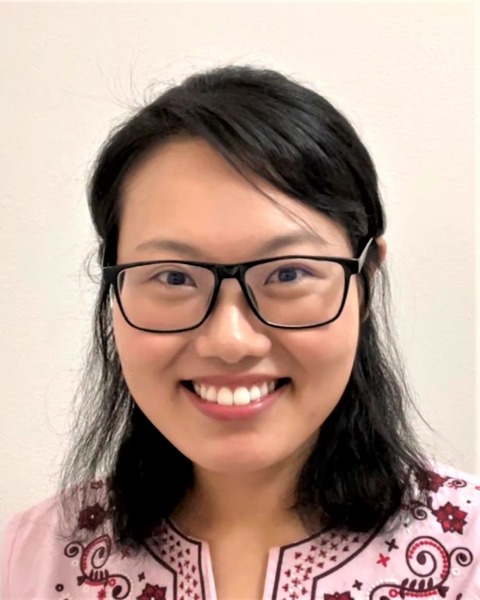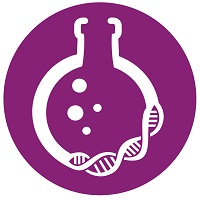Bioanalytics
Symposium: Novel Instrumentations in Bioanalysis
Bioanalysis of Emerging Modality Therapeutics Using Novel Mass Spectrometry Approaches
Wednesday, November 12, 2025
9:00 AM - 9:30 AM CT
Location: 221 CD

Rachel Shi
Principal Scientist
Genentech
South San Francisco
Speaker(s)
Mass spectrometry (MS) is a crucial tool in bioanalysis for analyzing emerging therapeutic modalities, providing insights into PK and stability profiles of biotherapeutics. Immunoprecipitation combined with liquid chromatography (LC)-MS/MS is widely used for quantifying biotherapeutics and biomarkers via surrogate peptides. In addition, intact protein LC-MS has been applied to characterize the biotransformation of antibodies and bioconjugate therapeutics from biomatrices after enrichment. This presentation explores cutting-edge MS methodologies for bioanalyses of novel therapeutic modalities at both peptide and intact protein levels with fit for purpose considerations in improving throughput, sensitivity, resolution and multiplexed capabilities.
Using a multivalent antibody as a model analyte, we applied affinity capture and intact protein MS was coupled with two MS front-end technologies, including SampleStream and subsequently high-field asymmetric waveform ion mobility spectrometry (FAIMS), to achieve high-throughput quantitation of the multivalent antibody and its biotransformation product resulting from clipping. The multivalent antibody used is composed of the fusion of an antigen-binding fragment (Fab) domain onto an immunoglobulin G1 (IgG1) antibody. Generic affinity capture ensures the unbiased recovery of both the intact species 1Fab-IgG1 and the potential in vivo clipping product IgG1. Subsequently, the analytes are directly loaded into SampleStream, enabling high throughput sampling to the MS, where each injection occurs within ~30 second intervals. FAIMS further offered improvement in signal-over-noise by ~30% for denatured protein MS. Furthermore, the selective FAIMS transmission of the IgG1 degradant product enabled more sensitive detection despite having lower abundance. We demonstrated that the integrated workflow resulted in a robust qualified assay for quantitation of spiked-in analytes between 0.1 to 25 µg/mL in serum.
Quantitating ADCs from biomatrices has been challenging with conventional methods such as ELISA due to the complexity of ADC modalities (and associated degradants) in the presence of co-dosing administration of other therapeutics. Recently, the Newomics DuoESI source, which contains multi-nozzle emitters to split a single microflow stream evenly into multiple nanoflows, has been coupled with Parallel Reaction Monitoring (PRM) LC-MS/MS to perform quantitation of proteins through surrogate peptide detection with improved sensitivity. Omitting immunoaffinity enrichment, we simultaneously quantitated co-administered ADC and a therapeutic antibody from serum using PRM LC-MS/MS though multiplexed detection. In addition, FAIMS was also coupled to Newomics source for additional PRM sensitivity improvement.
Finally, high DAR ADCs have been developed to improve ADC potency, but conventional native or denatured MS is often insufficient to characterize the biotransformation of these molecules due to analyte heterogeneity and low concentration in complex biomatrices. To investigate the DAR values and the stability profile of high DAR ADCs, we combined the native charge detection MS (CDMS) platform with the SampleStream platform and the Newomics MnESI source. Using two interchain modified DAR-14 ADCs, we applied native CDMS platform to characterize these ADCs in formulation buffer and from the ex vivo and in vivo environment where the concentration of ADC was lower than that from the formulation buffer. The results indicate that our native CDMS platform can serve as automated and sensitive tool to characterize high DAR ADCs and their stability from biomatrices.
Using a multivalent antibody as a model analyte, we applied affinity capture and intact protein MS was coupled with two MS front-end technologies, including SampleStream and subsequently high-field asymmetric waveform ion mobility spectrometry (FAIMS), to achieve high-throughput quantitation of the multivalent antibody and its biotransformation product resulting from clipping. The multivalent antibody used is composed of the fusion of an antigen-binding fragment (Fab) domain onto an immunoglobulin G1 (IgG1) antibody. Generic affinity capture ensures the unbiased recovery of both the intact species 1Fab-IgG1 and the potential in vivo clipping product IgG1. Subsequently, the analytes are directly loaded into SampleStream, enabling high throughput sampling to the MS, where each injection occurs within ~30 second intervals. FAIMS further offered improvement in signal-over-noise by ~30% for denatured protein MS. Furthermore, the selective FAIMS transmission of the IgG1 degradant product enabled more sensitive detection despite having lower abundance. We demonstrated that the integrated workflow resulted in a robust qualified assay for quantitation of spiked-in analytes between 0.1 to 25 µg/mL in serum.
Quantitating ADCs from biomatrices has been challenging with conventional methods such as ELISA due to the complexity of ADC modalities (and associated degradants) in the presence of co-dosing administration of other therapeutics. Recently, the Newomics DuoESI source, which contains multi-nozzle emitters to split a single microflow stream evenly into multiple nanoflows, has been coupled with Parallel Reaction Monitoring (PRM) LC-MS/MS to perform quantitation of proteins through surrogate peptide detection with improved sensitivity. Omitting immunoaffinity enrichment, we simultaneously quantitated co-administered ADC and a therapeutic antibody from serum using PRM LC-MS/MS though multiplexed detection. In addition, FAIMS was also coupled to Newomics source for additional PRM sensitivity improvement.
Finally, high DAR ADCs have been developed to improve ADC potency, but conventional native or denatured MS is often insufficient to characterize the biotransformation of these molecules due to analyte heterogeneity and low concentration in complex biomatrices. To investigate the DAR values and the stability profile of high DAR ADCs, we combined the native charge detection MS (CDMS) platform with the SampleStream platform and the Newomics MnESI source. Using two interchain modified DAR-14 ADCs, we applied native CDMS platform to characterize these ADCs in formulation buffer and from the ex vivo and in vivo environment where the concentration of ADC was lower than that from the formulation buffer. The results indicate that our native CDMS platform can serve as automated and sensitive tool to characterize high DAR ADCs and their stability from biomatrices.
Learning Objectives:
- Upon completion, participants will be able to describe the integration of affinity capture and MS methods for high-throughput quantitation of multivalent antibodies and their biotransformation products.
- Upon completion, participants will be able to demonstrate the use of different front-end technologies with MS to multiplex the protein quantitation with improved sensitivity.
- Upon completion, participants will be able to evaluate the application of native charge detection MS in characterizing high DAR ADCs and assessing their stability in complex biomatrices.

